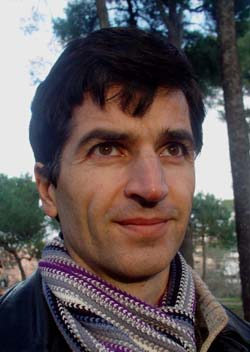Stefano Nolfi
Stefano Nolfi is senior researcher of the Institute of Cognitive Science and Technology, CNR where he is coordinating the Laboratory of Artificial Life and Robotics. He is also the coordinator of the European Integrated Project ECAgents: Embodied and Communicating Agents. He is on the Editorial Board of Connection Science and the International Journal of Advanced Robotic Systems.
Stefano has been a fellow of: Centre for Research in Language, University of California, San Diego, USA; Laboratory of Microcomputing, Swiss Federal Institute of Technology (EPFL), Lausanne, Switzerland; SONY Computer Science Laboratory, Tokyo, Japan; Institute of Advanced Studies of Berlin, Germany; University of New South Wales, Canberra, Australia.
His research interests are in the field of neuroethological studies of adaptive behavior in natural and artificial agents and include: Evolutionary Robotics, Artificial Life, Complex Systems, Neural Networks, Genetic Algorithms.
The main themes underlying his work are: (a) that behavioral strategies and neural mechanisms are understood better when an organism (living or artificial) is caught in the act, that is when one considers situated and embodied agents in their interaction with the environment; (b) that to understand how natural agents behave and to build useful artificial agents one should study how living organisms change, phylogenetically and ontogenetically as they adapt to their environment.
Stefano coedited From Animals to Animats 9: 9th International Conference on Simulation of Adaptive Behavior, SAB 2006, Rome, Italy, September 25–29, 2006, Proceedings (Lecture Notes in Computer Science), and coauthored Evolutionary Robotics: The Biology, Intelligence, and Technology of Self-Organizing Machines (Intelligent Robotics and Autonomous Agents), Self-organized coordinated motion in groups of physically connected robots, Emergence of communication in embodied agents evolved for the ability to solve a collective navigation problem, Toward open-ended evolutionary robotics: evolving elementary robotic units able to self-assemble and self-reproduce, and Evolving the neural controller for a robotic arm able to grasp objects on the basis of tactile sensors, and authored How learning and evolution interact: The case of a learning task which differs from the evolutionary task. Read his full list of publications!
Watch (22 MB .mpg file) his evolved swarm-bot first move behind the object, and then start to push it towards the light. Notice how the behavior is not optimal.
